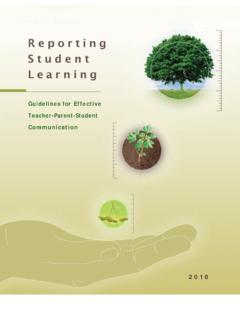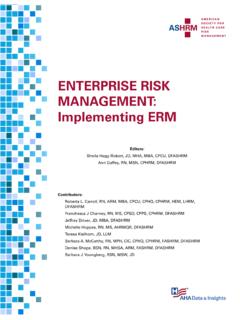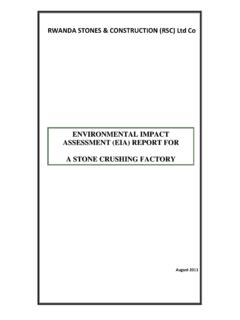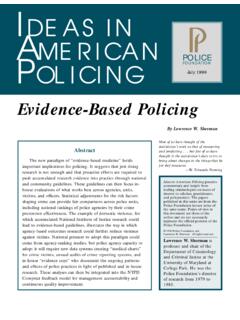Transcription of A Manual: Measuring and Interpreting Malnutrition
1 A Manual: Measuring and Interpreting Malnutrition and Mortality Acronyms ASMR Age-specific mortality rate ASMR-U5 Age-specific mortality rate for children under 5. BMI Body Mass Index CDC Centers for Disease Control and Prevention CMR Crude Mortality Rate/Crude Death Rate DHS Demographic and Health Surveys ENA Emergency Needs Assessment EPI WHO Expanded Programme on Immunization HIV/AIDS Human immunodeficiency virus/acquired immune deficiency syndrome HPLC High-performance liquid chromatography ICCIDD International Council for Control of Iodine Deficiency Disorders IDD Iodine deficiency disorders IMR Infant mortality rate INACG International Nutritional Anaemia Consultative Group LBW Low birth weight MICS Multi-indicator cluster surveys MMR Maternal mortality rate MUAC Mid-upper arm circumference NCHS National Center for Health Statistics NGO Non-governmental organization PPS Probability
2 Proportional to size PSU Primary sampling unit RBM Results-based management SCN United Nations Standing Committee on Nutrition SRS Systematic (or simple) random sampling U5MR Under-5 mortality rate UI Urinary iodine UNICEF United Nations Children's Fund VAD Vitamin A deficiency VAM Vulnerability Analysis and Mapping WFP World Food Programme WHO World Health Organization Table of Contents Acknowledgements 3. Purpose of the Manual 5. Foreword 7. Introduction 9. Chapter 1 Defining and Measuring Malnutrition 15. Chapter 2 Defining and Measuring mortality 33. Chapter 3 Designing a survey 53. Chapter 4 Using and Interpreting survey results 107. for decision making Chapter 5 Ethical issues 127. Chapter 6 The end point: example of a good survey report 131.
3 Annexes Policy Paper Brief: Food for Nutrition 175. Policy Paper Brief: Micronutrient Fortification 177. Policy Paper Brief: Nutrition in Emergencies 179. 2 Anthropometry 181. Weight for height reference in Z-scores 191. Weight for height reference in percentage of the median 195. both boys and girls Height for age index in Z-scores 197. Weight for age reference values for boys 199. Weight for age reference values for girls 201. 4 Sample data collection forms for a nutrition 203. and mortality survey 5 Random number table 207. 6 Example of ethical clearance form 209. 7 Resources 217. 8 Glossary of terms 219. 9 Q&A sheet 227. Acknowledgements As a joint collaboration between the World Food Programme (WFP) and the Centers for Disease Control and Prevention (CDC), we would like to acknowledge the hard work of the persons involved in the development of this manual.
4 The key technical advisors were Bradley Woodruff and Reinhard Kaiser from the CDC. Many thanks for their technical wisdom, patience and persistence. In addition, warm thanks are given to Roodly Archer and Fiona Galloway of the CDC for their consistent support and input into the manual development process. The core WFP team consisted of Rita Bhatia and Leah Richardson. Patrick Webb, Andrew Thorne-Lyman and Soha Moussa were also intimately involved in the develop- ment process - warm thanks for their technical input and illuminating visions. Additional thanks to Kevin Sullivan for his technical review and comments. There are many people who have contributed by providing comments on this manu- al and who deserve special mention, for without their help, advice and support, this manual would not have been possible.
5 In particular, thanks are given to all the staff of Nutrition Service and to the staff involved in the accompanying Pilot Advanced Nutrition Training. Measuring AND Interpreting Malnutrition AND MORTALITY 3. The Purpose of this Manual WHY THIS MANUAL? To provide guidance on issues relating to nutrition and mortality surveys. To standardize survey methodology used by WFP staff, consultants and implementing partners as a means of ensuring quality. To standardize survey data interpretation and reporting . WHO IS IT FOR? WFP staff involved in nutrition-related data collection and/or nutrition interventions. WFP staff involved in nutrition intervention decision-making. WFP consultants and partners involved in nutrition surveys and interventions.
6 WHAT DOES IT CONTAIN? A chapter on anthropometry and micronutrient deficiencies. A chapter on mortality. Guidance on deciding when secondary data are of sufficient quality for WFP purposes, thereby rendering a new survey unnecessary. A chapter on survey methodology, including an essential guide on selecting appropriate survey methods and calculating sample size. Guidance on Interpreting and using survey results along with available complementary materials to make informed decisions. Guidance on reviewing survey reports for quality. Example of a good survey in comparison to a less valid one. HOW SHOULD IT BE USED? As a reference guide. As complementary material for the WFP Advanced Nutrition Training. As a basis for framing questions/discussions with nutrition experts.
7 WHAT IT DOES NOT DO! Does not absolve you of carefully thinking about decisions. Does not provide programmatic guidance on what to do with survey results (guidance on such issues can be found in the WFP Food & Nutrition Handbook). Does not provide guidance on identifying Malnutrition on an individual basis, but focuses on population-based Malnutrition . Does not provide guidance on screening for either Malnutrition or nutrition surveillance. Measuring AND Interpreting Malnutrition AND MORTALITY 5. Foreword While nutrition has been central to WFP's mandate for the past 40 years, its importance to WFP is growing. Already recognized as a key player in nutrition, WFP plays an increa- singly visible role in micronutrient fortification, HIV/AIDS-nutrition programming, scho- ol nutrition and enhanced maternal and child interventions.
8 Following the Executive Board's endorsement of three nutrition policies in 2004, WFP's Strategic Plan for 2006- 2009 reconfirms the organization's commitment to support improved nutrition among children, mothers and other vulnerable people in both crisis and non-crisis settings. However, achieving greater impact, and more clearly documenting results, will be a chal- lenge. The adoption of nutrition indicators in the context of Results-Based Management represents a significant shift in WFP's use of nutrition data - going beyond monitoring and evaluation to the corporate reporting of nutrition and mortality outcomes. Enhancing the capacity of WFP staff, partners and national counterparts to collect and interpret sur- vey-derived data will be a key to future successes.
9 It is of utmost importance that such data are collected using appropriate methods, interpreted meaningfully (in light of com- plementary information on food security, health, markets, etc.), and presented and used in transparent, appropriate ways. This manual was prepared to support such capacity-enhancement, providing rigorous yet accessible advice on survey dos and don'ts . It provides step-by-step guidance intended not only for nutritionists and nutrition focal points, but for all staff involved with data management, programme design and reporting . This is not to suggest that WFP staff collect most nutrition information; such data are collected frequently by partners. However, even when they do not themselves design and conduct surveys, WFP staff must be conversant with data quality issues to be able to interpret and use information appropriately.
10 In other cases, WFP country offices, often with headquar- ters and regional bureaux support, will indeed directly oversee data collection and analysis. This manual tells you how. The manual (and its associated training modules) is a team product, combining input from many individuals whose contributions are much appreciated. Future editions are envisaged, with updates occurring according to developments in nutrition science, sur- vey methods and WFP needs. Feedback is therefore always welcome. We hope that the information provided will be widely used and lead to further improvements both in pro- gramming and in our ability to report on successful interventions. Patrick Webb and Rita Bhatia Nutrition Service WFP, Rome July 2005. Measuring AND Interpreting Malnutrition AND MORTALITY 7.













